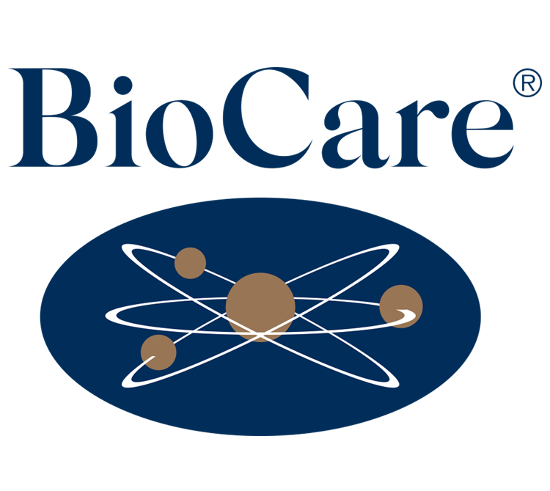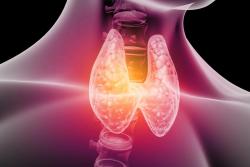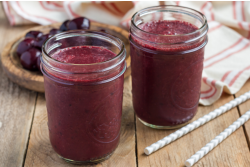We often hear from people who suffer from sore, painful, stiff, injured, or loose joints/ligaments, or are likely to suffer injuries. Joints and ligaments can be prone to wear and tear, stiffness, degradation by immune factors, or even damage in accidents or exercising.
Arthritis is an umbrella term for different conditions which cause inflammation of the joints, leading to symptoms such as pain, swelling, stiffness (often in the knees, hips, hands and back) and reduced mobility. Arthritis affects approximately 10 million people in the UK, with 8 million cases of arthritis being caused by osteoarthritis.1 Arthritis is one of the most common diseases in the working population, and musculoskeletal conditions are responsible for a third of all work-related absences resulting in 30.6 million lost working days per year. The combined cost of Rheumatoid Arthritis (RA) and Osteoarthritis (OA) to the economy is 14.8 billion a year.2 The pain and fatigue it causes can make it difficult for people to travel to work and partake in roles that are more physically demanding and can also have an impact on social and family life.
Osteoarthritis (OA)
Osteoarthritis is by far the most common type of arthritis, primarily affecting older adults. OA mainly involves the larger weight bearing joints of the knee and hips. Physical stress is the hallmark of joint degradation in osteoarthritis since this condition is largely a degenerative one caused by joint overuse. This includes mechanical derangements, joint overuse, or hypermobility, all of which shift load bearing to infrequently loaded regions of cartilage which cannot accommodate it.3 In OA, the cartilage gradually wears away or there can be abnormal remodelling of the cartilage extracellular matrix,3 with structural changes in the whole joint which can include the synovium, ligaments and subchondral bone. Tissue damage can trigger the release of enzymes that further accelerates cartilage breakdown. The joint space becomes narrow, causing the bones to rub together and the surrounding tissue becomes inflamed.4 Muscle degeneration can also occur due to altered movement.
Musculoskeletal symptoms are more common at menopause, too, and arthralgia is a symptom reported by 50% of women.5 This is because oestrogen receptors are found in cartilage, sub-chondral bone, synovium, tendons and muscles,6,7 and the reduction in oestrogen levels at menopause can raise the levels of reactive oxygen species and pro-inflammatory cytokines.6
Genetics can also be implicated in the development of OA, causing accelerated deterioration of articular cartilage. Matrix metalloproteinases (MMP) expression and inflammation may be upregulated in joint pathology. MMP-1 and MMP- 13 have predominant roles in the development of RA and OA. MMP-13 specifically, degrades collagen and aggrecan, giving it a dual role in matrix destruction. Expression of other MMPs such as MMP-2, MMP-3, and MMP-9 which degrade non-collagen matrix is also elevated in arthritis.8 MTHFR C677T polymorphism is also another gene linked to the development of osteoarthritis through the elevation of homocysteine levels which trigger inflammation processes in the joints.9
In OA, initially, symptoms of pain will be mild during weight bearing activities and movement, becoming more severe as the degeneration progresses. Joint movement can be limited, and joints can appear swollen and hard as osteophytes develop.
Rheumatoid Arthritis (RA)
Rheumatoid arthritis (RA) is the second most common type of arthritis. RA is an inflammatory autoimmune condition of the synovial membranes. Rheumatoid factor (RF) and Immunoglobulin G (IgG) antibodies join to form immune complexes that contribute to the disease process, and higher levels are associated with higher disease severity. RA causes the thickening of the synovial membrane and the release of chemicals (cytokines, prostaglandins, leukotrienes, nitric oxide and other inflammatory chemicals) that break down the cartilage and bone within the joint.10 RA can also cause joint deformities such as rheumatoid nodules, ulnar deviation, metacarpophalangeal joint subluxation, swan neck deformity, Boutonniere deformity, and the "bowstring" sign is commonly seen in advanced stages of the disease.11 RA can lead to damage to other organs in the body, such as the heart, lungs, and eyes. Fatigue and general malaise are also common. Compared to OA, rheumatoid arthritis, is typically symmetrical, affecting the same joint on both sides of the body.12 RA can be triggered after a microbial or viral infection, smoking, environmental pollution, hormonal imbalance and chronic stress.12 Gastrointestinal status may also be relevant via the effect of cross-reactivity and molecular mimicry,13 compounded by intestinal permeability14 and impaired protein digestion.2
RA has a genetic link and is more common in females. The immune system of females tends to skew towards Th2 dominance15 and oestrogen dominance can also be an additional factor because of higher immunostimulatory and pro-inflammatory properties.16
Genetic links include SNPs of the HLA gene, which codes for the major histocompatibility complex (MHC) proteins, which may contribute 50-60% to disease risk in RA.17
RA sufferers generally experience joint pain and stiffness. Symptoms tend to be worse in the morning and after rest. Joints can be swollen and hot.
So, let’s have a look forward on how we can support our joint health with dietary, lifestyle and nutrient support.
Dietary recommendations
- Follow a Mediterranean-style diet high in fruits, vegetables, legumes, oily fish, wholegrains and healthy fats such as olive oil can help to increase antioxidant intake and reduce inflammation.
- Reduce consumption of processed foods, sugar and alcohol, to reduce inflammation.
- Try to avoid gluten & dairy containing foods in RA. In addition, dietary lectins (found in grains and legumes) have been implicated in the damage to the gut wall observed in those with RA.18 Some people may also react to solanine from nightshade vegetables (tomatoes, peppers, potatoes, aubergines and chilli).
- Make sure to include protein with each meal as this is essential for collagen production and maintaining muscle mass.
- Increase consumption of vitamin C rich foods such as kiwis, red peppers, berries, oranges to support collagen production.
- Bone broth consumption can provide a natural source of glucosamine, gelatine, and chondroitin to offer support for joints and ligaments.
- Support the gut microbiome and digestive function can help with the absorption of essential minerals for joint health,19 as well as regulating inflammation. 20 A diet high in plant foods will help to feed our beneficial microflora, as well as fermented foods such as kombucha, kefir, sauerkraut and kimchi.
Nutrients to Support Joint Health
Collagen
Up to 35% of all body protein is made up of collagen. It is a key component of connective tissue, and deficiency is associated with the development of RA & OA.21
Ligaments and tendons contain more collagen type I which provides them with tensile strength. Collagen type II is an abundant matrix molecule of cartilage and can support joint health and improve stiffness and mobility.22 Research has found that supplementation with collagen significantly improved knee osteoarthritis by helping joint function and reducing pain.23 24 Collagen can also reduce inflammation associated with arthritis.25 Collagen type II can decrease serum levels of inflammatory cytokines such as IL-1β, IL-6, TNF-a which can lead to joint degradation,25 and thus, it can decrease joint inflammation and pain in osteoarthritis.25
Glucosamine, MSM and Chondroitin
Glucosamine, sulphur (from MSM) and chondroitin are key components of synovial and bursal fluid, mucous membranes, ligaments, tendons, and cartilages. Glucosamine hydrochloride appears to stop or reverse joint degeneration by providing the body with the materials (GAGs) it needs to build and repair cartilage.26
MSM is a natural from of sulphur. On its own, it has been found to reduce pain and swelling in arthritis and, it’s even more effective when combined with glucosamine.27
Chondroitin sulphate provides structural support to ligaments and other connective tissue. In arthritis patients, it can increase cartilage volume,28 reduce pain,29 reduce duration of morning stiffness, and inflammation.30
Curcumin
Curcumin is an active component in turmeric. It can inhibit inflammatory cytokines like COX-2, prostaglandins, and leukotrienes, thus reducing inflammation, improving RA,31, 32 and is as effective as certain nonsteroidal anti-inflammatories (NSAIDs) at reducing pain.31
Another study revealed significant improvements in pain, walking performance, and range of motion after just 5 days of supplementation of 500 mg of Curcuwim Ultra + as well as reduced pain and stiffness, enhancements in knee extension and flexion, decreased joint discomfort and inflammation, improved knee muscle strength, and reduced medication usage after 28, 56, and 84 days compared to the placebo group.33 Curcumin is poorly absorbed so it is essential to emulsify it to enable effective delivery from the gut to the rest of the body. The Ultra+ emulsification technology makes it 144 times better absorbed than standard curcumin and provides a longer-lasting effect in the body, with high blood levels even after 12 hours.33
Omega-3
Omega-3 from fish oil can support joints by increasing collagen production and reducing inflammation.34 High doses of the EPA omega-3 fatty acid resulted in a reduction in joint stiffness 35and pain in rheumatoid arthritis.36
Boswellia
Boswellia has been found to be effective at reducing pain by acting on pain receptors. A clinical study on the anti-arthritic efficacy of Boswellia seratta extract was evaluated in osteoarthritis subjects, demonstrating a significant reduction in pain, stiffness, physical function and improvement in the quality of life.37 Boswellia combined with curcumin showed even stronger reduction in pain on active movement compared to either used alone.38
Lifestyle recommendations
- Regular exercise is important for strengthening muscles surrounding the joints and supporting mobility. Low impact exercises such as swimming, walking, cycling, qigong and yoga can be beneficial for joint conditions.
- Maintaining a healthy weight can help to reduce excess stress on the joints.
- Physical therapies performed by chiropractors, osteopaths or massage therapists can help to release muscle tension around the joints, alignment, improve circulation to the joints and reduce pain.
- Reduce stress through doing lower impact activities and taking time out to rest. Walks outside in the day can help to regulate cortisol levels.
- Expose skin to the sun from April to September to increase vitamin D levels which can support with lowering inflammation.
Arthritis is a complex inflammatory condition and supporting the reduction of inflammation with diet and lifestyle along with anti-inflammatory nutrients can greatly impact on the reduction in pain and improved mobility. The addition of joint supporting nutrients can improve symptoms and therefore quality of life.
References
1. The State of Musculoskeletal Health. Accessed September 29, 2023. https://versusarthritis.org/about-arthritis/data-and-statistics/the-state-of-musculoskeletal-health/
2. Arthritis V. Working with arthritis policy report.
3. Gu Y-T, Chen J, Meng Z-L, et al. Research progress on osteoarthritis treatment mechanisms. Biomedicine & Pharmacotherapy. 2017;93:1246-1252. doi:10.1016/j.biopha.2017.07.034
4. Mobasheri A, Batt M. An update on the pathophysiology of osteoarthritis. doi:10.1016/j.rehab.2016.07.004
5. Magliano M. Menopausal arthralgia: Fact or fiction. Maturitas. 2010;67(1):29-33. doi:10.1016/j.maturitas.2010.04.009
6. Fenton A, Panay N. Estrogen, menopause and joints. Climacteric. 2016;19(2):107-108. doi:10.3109/13697137.2016.1151151
7. Richmond RS, Carlson CS, Register TC, Shanker G, Loeser RF. Functional estrogen receptors in adult articular cartilage: Estrogen replacement therapy increases chondrocyte synthesis of proteoglycans and insulin‐like growth factor binding protein 2. Arthritis Rheum. 2000;43(9):2081-2090. doi:10.1002/1529-0131(200009)43:9<2081::AID-ANR20>3.0.CO;2-I
8. Burrage PS, Mix KS, Brinckerhoff CE. Matrix metalloproteinases: Role in arthritis. Frontiers in Bioscience. 2006;11(1 P.447-888):529-543. doi:10.2741/1817
9. Inanir A, Yigit S, Tural S, Cecen O, Yildirim E. MTHFR gene C677T mutation and ACE gene I/D polymorphism in Turkish patients with osteoarthritis. Dis Markers. 2013;34:17-22. doi:10.3233/DMA-2012-00939
10. Sudoł -Szopińska I, Kontny E, Maśliński W, et al. Patogeneza reumatoidalnego zapalenia stawów w badaniach radiologicznych. Część I: Powstawanie nacieków zapalnych w błonie maziowej The pathogenesis of rheumatoid arthritis in radiological studies. Part I: Formation of inflammatory infiltrates within the synovial membrane.
11. Chauhan K, Jandu JS, Brent LH, Al-Dhahir MA. Rheumatoid Arthritis. Rosen and Barkin’s 5-Minute Emergency Medicine Consult: Fifth Edition. Published online May 25, 2023. doi:10.1017/chol9780521332866.074
12. Cutolo M, Nikiphorou E. Don’t neglect nutrition in rheumatoid arthritis! RMD Open. 2018;4:591. doi:10.1136/rmdopen-2017-000591
13. Rojas M, Restrepo-Jiménez P, Monsalve DM, et al. Molecular mimicry and autoimmunity. Published online 2018. doi:10.1016/j.jaut.2018.10.012
14. Fasano A. Leaky gut and autoimmune diseases. Clin Rev Allergy Immunol. 2012;42(1):71-78. doi:10.1007/s12016-011-8291-x
15. JA G-G, FJ M, J E, et al. Consistent production of a higher TH1:TH2 cytokine ratio by stimulated T cells in men compared with women. Eur J Endocrinol. 2000;143(1):31-36. doi:10.1530/EJE.0.1430031
16. Ngo ST, Steyn FJ, McCombe PA. Gender differences in autoimmune disease. Front Neuroendocrinol. 2014;35(3):347-369. doi:10.1016/J.YFRNE.2014.04.004
17. Characterizing the quantitative genetic contribution to rheumatoid arthritis using data from twins - MacGregor - 2000 - Arthritis & Rheumatism - Wiley Online Library. Accessed October 20, 2023. https://onlinelibrary.wiley.com/doi/10.1002/1529-0131(200001)43:1%3C30::AID-ANR5%3E3.0.CO;2-B






